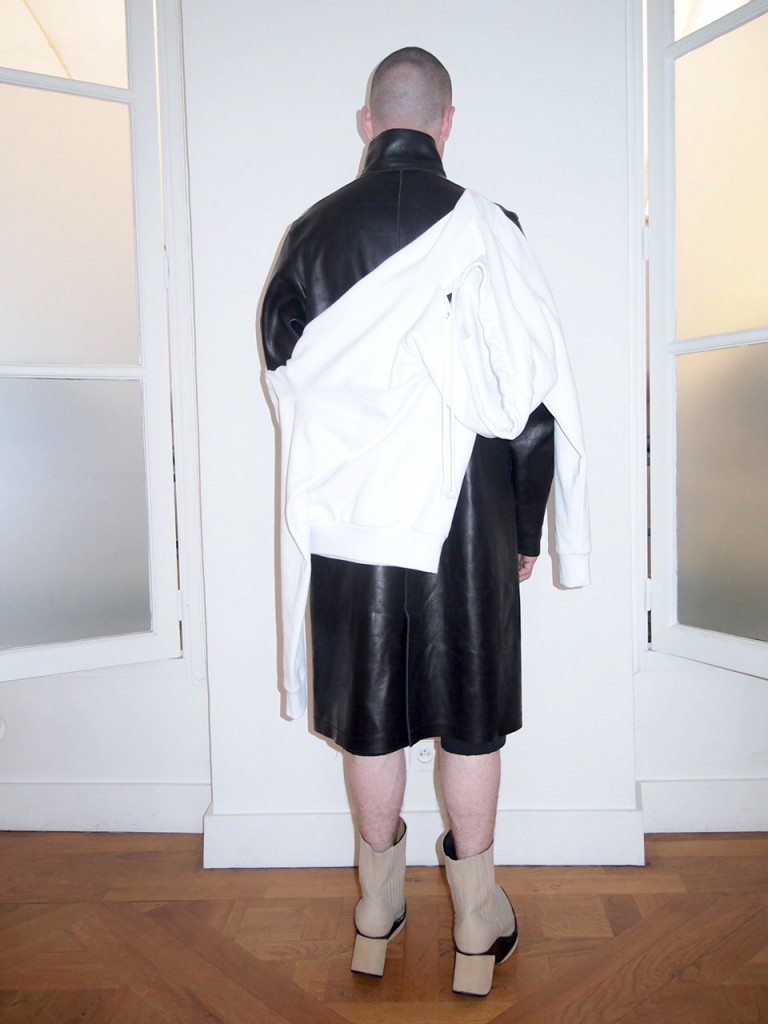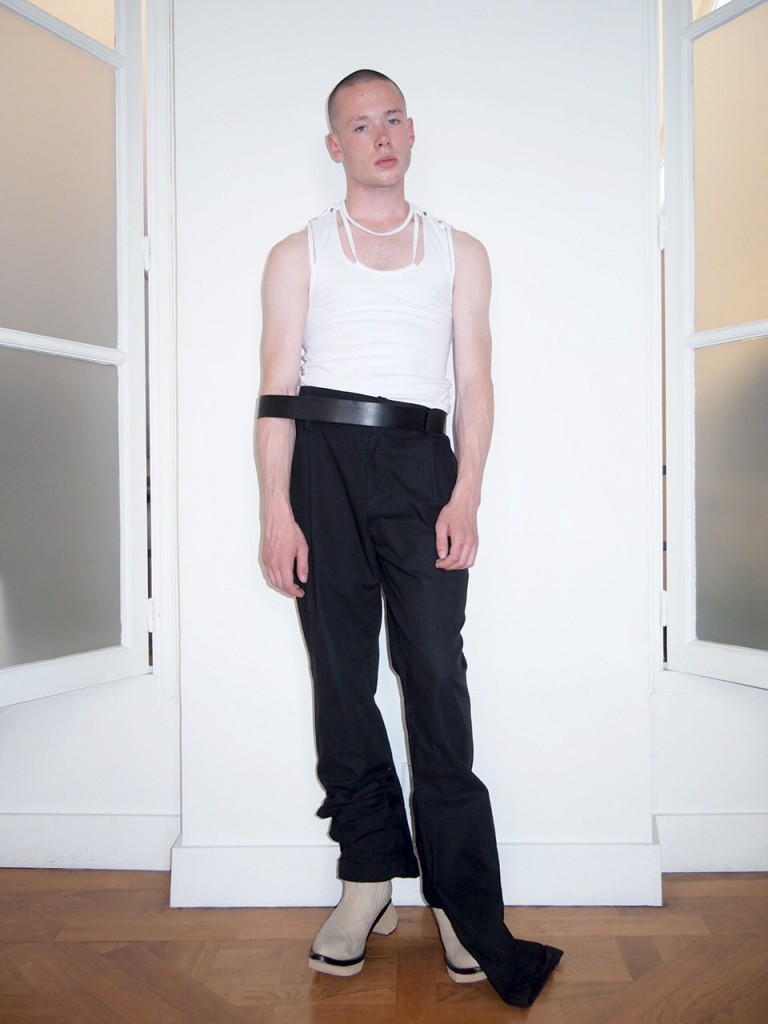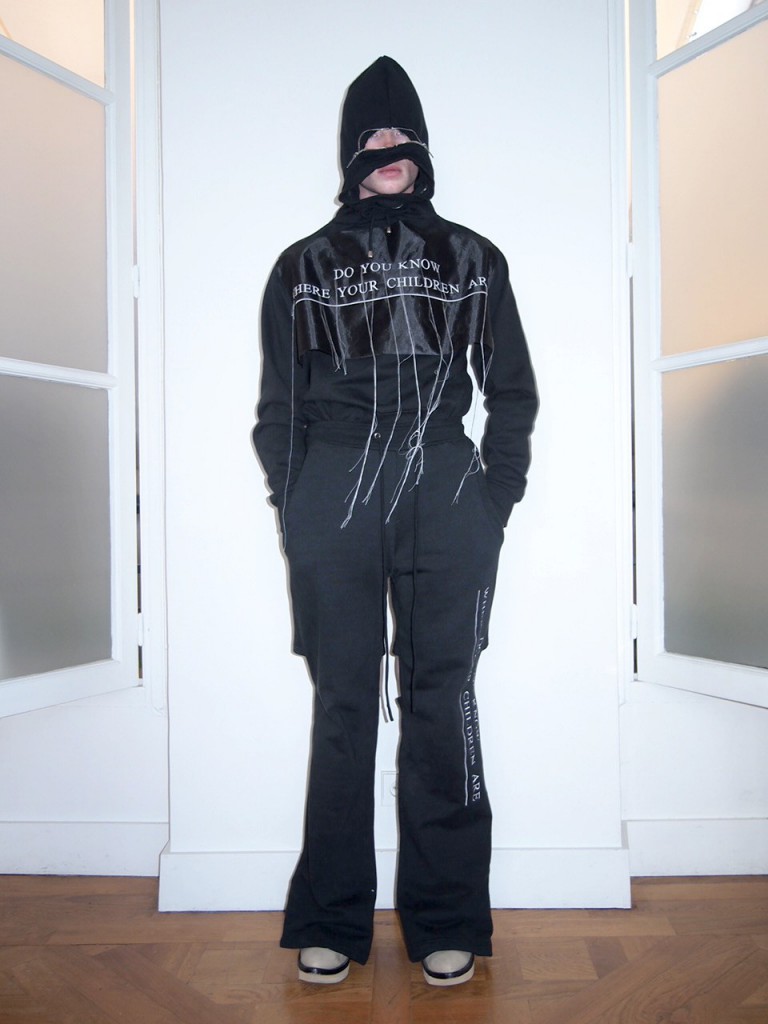Hood By Air Menswear Spring 2017, Paris
Hood By Air makes things difficult. These images were shot days after its Spring 2017 show in Paris, a frenzied cruise in semi-darkness through a gay sauna in a seedy part of the Marais that culminated in a synchronized swim in the hammam’s subterranean pool (don’t think: Busby Berkeley). The clothes were glimpsed only in passing, as models pressed against bystanders and then moved along. “We revisit things that people know about HBA here, like logo placement. Because it’s recognizable in the dark,” said Shayne Oliver postshow. “We push newer ideas forward in the light.”
The light he’s talking about is Hood By Air’s biannual shows that are part of New York women’s Fashion Week, staged with increasingly polished production values (and, indeed, lots of lights). While Oliver himself is loath to put labels like menswear or womenswear on his garments, he understands the demands of presenting collections with those market restrictions. Hence the fact his Paris “shows” boycott the runway in favor of atmospheric locales and unconventional formats. “We just want to celebrate Hood By Air in the men’s market,” said Oliver. “When people are reviewing it against something that is very tailored, it feels weird . . . we’re not competing with them.”
So what are these January and July shows all about for Oliver? Research and development, it seems; he talked about the garments acting as the reference for the show to be staged in September, also acknowledging the very real business behind this creativity—that these clothes will drop earlier, satisfying retailers with an advance delivery. Almost like a Hood By Air recollection then, although the ingenious complexity of Oliver’s work couldn’t be further from bland commercialism. There’s something unsettling about what Oliver shows, often with implications of violence in the slicing, mutilated pieces distorting perceptions of the body within. But he saw these looks as a kind of “positive utilitarianism,” also linking to the military theme that ran through the season. Although Oliver’s utility wound up in hospital garb: Rather than garments slicing apart the body in attack, the outfits were centered around healing, with their trusses, bandages, and even built-in leg braces. What was bandage and what was bondage? The contrast between flesh strapped for pleasure and flesh strapped to cure pain was never quite clear. Oliver said these spaces were about relaxation, about a relaxed attitude to sexuality, and an ease with the body. It wound up like a Netflix-and-chill session watching The Texas Chain Saw Massacre, helped by a decibel-shattering soundtrack. It was uncomfortable, but it also pushed us out of our comfort zone.
What Oliver does is exciting because it speaks to people. His fashion seems progressive, difficult even, due to its odd proportions and strange slogans. Do you know where your children are read one, mimicking scare mongering that preoccupied previous generations and hasn’t entirely been shaken off by our own. These clothes are arresting because they’re a product of our times, of a designer plugged into groundswell movements in culture, rejecting the hierarchy and elitism and creating something that resonates. It also satisfies fashion critics who want to be excited, annoyed, and generally provoked by clothes that challenge. Which means that you don’t mind being crammed into a sweaty bathhouse and barely glimpsing fabric and flesh in the gloom. It’s an experience—inconvenient, but interesting.
At least it feels like Oliver is trying to say something new, to find his own voice rather than join the conversation about the tired language of luxury. That doesn’t even feel relevant when you’re talking about these clothes. They’re something else. And in a world where otherness is rapidly co-opted by a voracious fashion system and forced into its pigeonholes, Hood By Air’s steadfast refusal to kowtow to the system is worthy of plaudits.
Source: Vogue.com.
Text: Alexander Fury, Vogue.com.
All images belongs to the respective artist and management.


